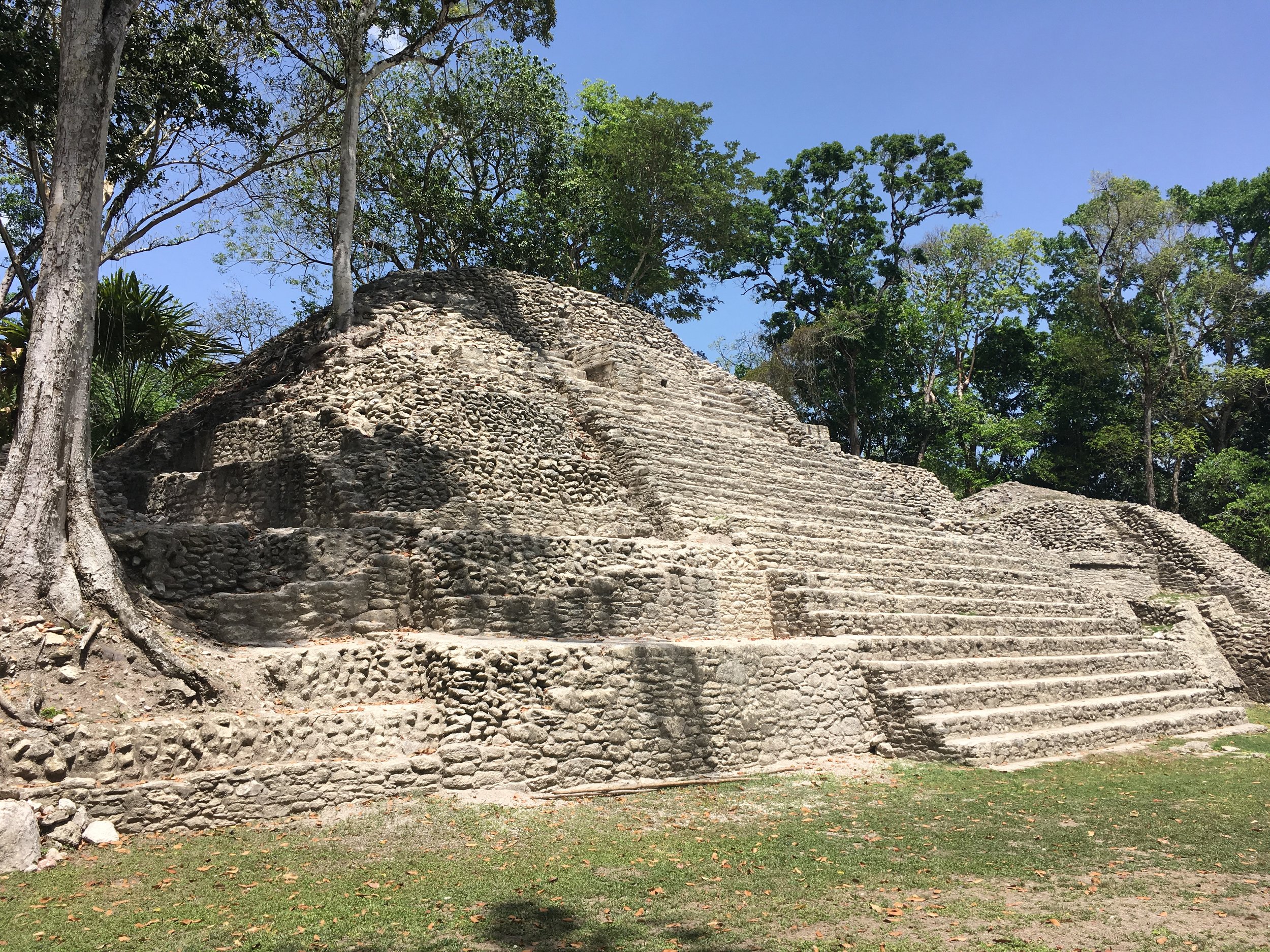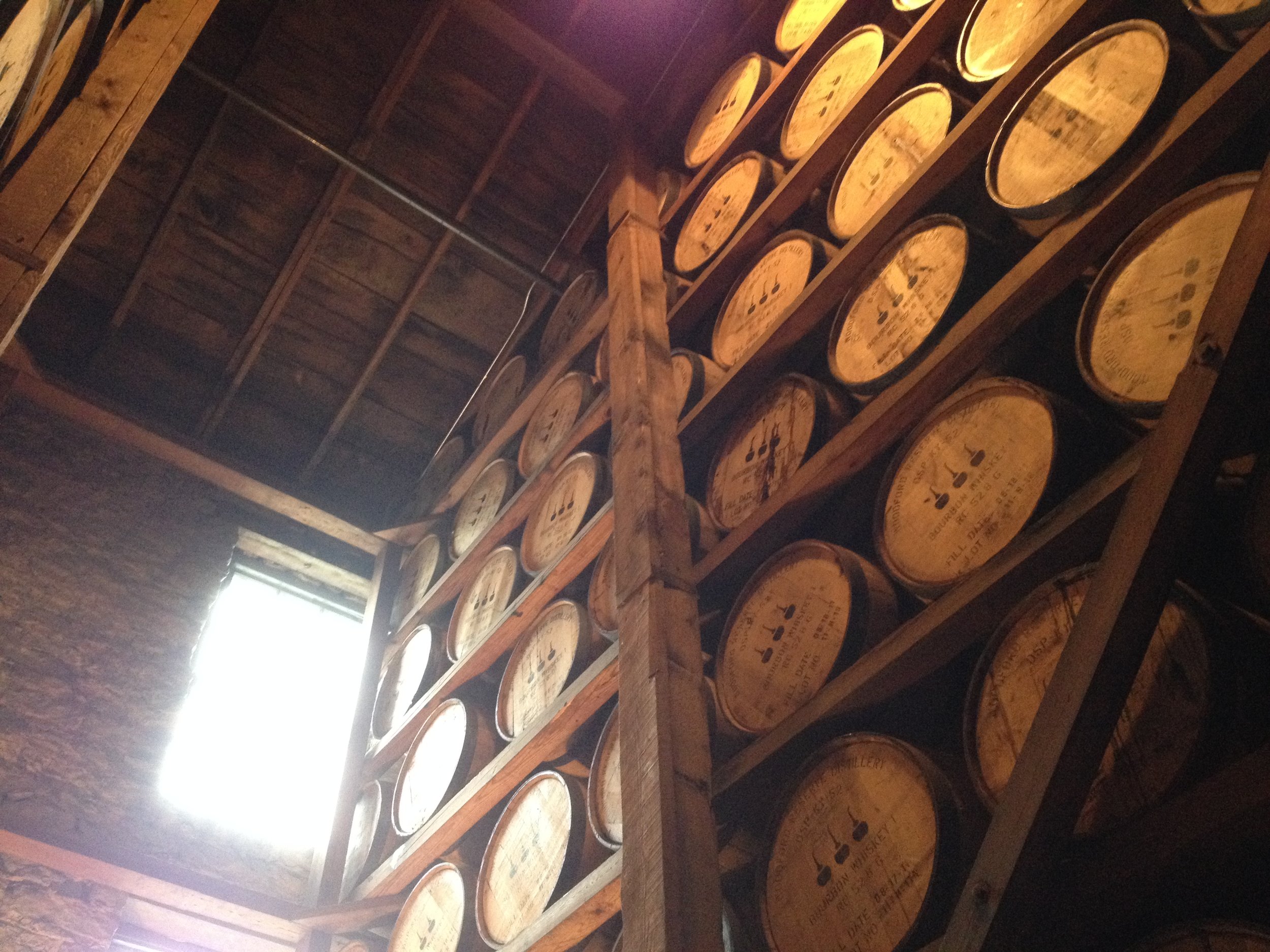My 7 Favorite Things About San Ignacio
/San Ignacio is a small town in the western part of Belize, close to Guatemala. Unlike the tourist beaches and Belize City in the east, this area is mostly farmland and small settlements. Belize is a land of many different ethnicities and two major political parties (signs from which we saw everywhere during our stay, since it was election season). The country is English-speaking, and used to be known as British Honduras, but it gained its independence (and its new name) in 1981.
A baby iguana at the Green Iguana Conservation Project.
There are restaurants and hotels to serve tourists, but really, visiting San Ignacio is not a cushy vacation in the Western sense of material comforts. You may not have hot water in your Airbnb. You will definitely not have air conditioning. But this is how almost everyone there lives, so you can’t really complain. Enjoy what is beautiful about the place instead.
It’s not easy to synthesize all the impressions of my six days in San Ignacio into one short post. I’m mostly left with vivid impressions—the hot, dusty road in the sun; people walking with their children as dogs trot beside them; the little coral-painted library; the green palm trees, reminding you that you’re in the tropics, even when you’re standing next to a convenience store.
Here were my five favorite things about my trip to San Ignacio:
The ATM Cave
I wrote about this one in a separate blog entry. The Actun Tunichil Muknal cave is a fascinating adventure, and an absolute must-do activity if you are visiting the area. If you think you want to go, you should definitely go. If you think you don’t want to go, you should still definitely go.
The iguanas
Ever wanted to pet an iguana? At the Green Iguana Conservation Project, centered at the San Ignacio Resort Hotel, you can pick them up, pet them, feed them, let them climb all over you, or just get down on the floor and stare them in the eye.
Feeding an iguana at the Green Iguana Conservation Project.
The project raises this endangered iguana species and then releases adults into the wild; it also offers hourly tours throughout the day to share these fascinating reptiles with the public. The iguanas look like miniature dinosaurs, with thin, scaly skin, strong muscles, dexterous fingers, and glittering eyes. (If you scratch easily, I recommend long sleeves.) On our tour, the guide even brought out a tiny baby iguana for me to hold—definitely the highlight of the visit.
Cahal Pech
In the U.S., we’re very precious about our historic sites. Tourists shuffle down narrow hallways and peer into the roped-off rooms of our founding fathers while being reminded sternly not to touch anything. And those sites are only about two hundred years old.
At Cahal Pech, you can climb all over thousand-year-old Mayan ruins without anyone caring. When we visited, there were archaeologists at work in a dig in a main plaza, as well as workmen shoring up crumbling stone. But aside from that, it was nearly deserted. In an hour and a half, we saw only a handful of other tourists come and go.
Trees growing up out of the ruins at Cahal Pech.
These beautiful structures—burial pyramids, ball courts, and royal residences—have survived the centuries well. Excavated with care, they now seem half wild, half domesticated. Trees and their curling roots decorate the ruins, growing straight up out of the tombs. Giant palms guide you toward plazas dappled with sunlight and shade. Dark nooks beckon you to wonder, with a shiver, whether the chamber you’re standing in was a sleeping room or a sacrificial altar.
Interpretive materials are thin on the ground, though there is a small exhibit at the entrance building, so you’ll need to do your own follow-up research. I’m a sucker for abandoned ruins, whether it’s an old factory or a prairie barn, and this was one of my favorite explorations ever. You can bet I read up on the Maya, as soon as I got back home to the local library.
Cahal Pech was one of the most interesting places I’ve ever seen, and if I hadn’t been melting in the heat, I would have wanted to stay for hours longer (and shoot hundreds more pictures).
The Macal River and Hawkesworth Bridge
The Macal River cuts between San Ignacio and its sister town, Santa Elena. You can get a view of its smooth waters and lush banks from the small San Ignacio public library, walk down to it from the residential streets, or wander across the Hawkesworth Bridge and look down.
View of the Macal River and Hawkesworth Bridge from San Ignacio, looking toward Santa Elena.
This short, attractively rusted bridge with turquoise-painted columns allows cars, cyclists, and walkers across the river between the two towns. Both the river and the bridge are beautiful in the evening, and you can see families down by the shore, letting their children play in the water or walking their dogs along the bank.
Lime juice is the best juice.
Different ways of getting food
There is a daily market downtown near the visitor center, with stalls of fresh bananas, peppers, limes, onions, mangoes, and so on. Not much variety, but plentiful mounds of the staples. Ask a few stalls for their prices before choosing, as most of them carry the same stock. The big day is Saturday, which we missed on our visit.
Restaurants can be found downtown, and street food can be found anywhere. You can also pick up snacks from people standing on street corners in town selling plastic bags with slices of pineapple or mango inside. The tacos are great—hot and simple from roadside stands, and gussied up a bit in restaurants with mango salsa. I also got excellent Chinese food on a couple of nights.
Ko-Ox Han nah was one of my favorite restaurants, with a large selection of dishes. It’s one of the most recommended places in the town and is often crowded at dinnertime, but we had the place to ourselves on a weekday morning for breakfast, where I got huevos rancheros with fry jacks.
My best discovery in San Ignacio food, though, was a beverage: lime juice. I have yet to find an equivalent back home. Lime juice goes with pretty much every kind of food, and is fresh, subtle, and thirst-quenching.
In the village of Bullet Tree Falls, a few miles outside San Ignacio, we happened to wander past an unprepossessing café attached to a home, where we found the best banana milkshake that may be produced in this universe.
The home of the best banana milkshake in the world. Notice the UDP sign, during election season. Also note the requisite unleashed dog.
Supermarkets in San Ignacio are quite different from the U.S. version. In San Ignacio, they are small corner stores, always open to the air, with small refrigerators at the sides where you can get a few local staples such as Belikin beer and boxed mango juice, and a couple of imports like Gatorade. The aisles in between are filled with British-style packaged snacks, soups, basic toiletries, and pet food. They’re fun to putter around on the way back to your hotel, and it’s nice to know you can pop out and get something if you need it.
The taxis
In this town, if you don’t want to walk somewhere, you can easily hail a taxicab from the street, whether on the main strip or walking along the highway away from town, and it only costs $2.50 U.S.
Just don’t expect your ride to be a cushy refuge from the heat and wind; San Ignacio taxis are ordinary late ‘80s to early ‘90s small sedans, with at least one of the following: broken windows; several other passengers; or missing door handles, seat belts, or mufflers. None have air conditioning. But hey, did I mention they are $2.50, and you never have to wait more than five minutes for one to pass?
An in-progress Belizean home.
The houses
In Belize, we learned from our Airbnb host, people often build their homes in stages, over time—sometimes many years—in order to assemble their houses as money allows. This explained the many seemingly abandoned cinder-block structures we saw along various streets—they weren’t abandoned at all, they were just in progress.
The fully built homes were often up on stilts and painted in Caribbean colors, lending a festive feeling to the dusty neighborhood streets.
Lots of people own dogs, but they let them roam around free, and many others who are slightly wealthier keep them inside their gated yards as guard animals. Either way, I stopped counting dogs I saw during our visit, there were so many.
In Ladyville, an airport town just west of Belize City, we spent about 24 hours killing time before our flight back home. Strolling around the homes, we saw plenty of colors and plenty of palms, as well as a school and a brand-new library in a small community center.
A brightly painted home in Ladyville.
Ladyville also held the biggest supermarket we’d been to yet, and we spent longer than I wish to admit perusing its aisles and marveling over the unique flavors of Ramen noodles packets available.
Now, my world is bigger.
San Ignacio was a place well outside my comfort zone, but it thereby expanded it. It may have been in the upper 90s every day, but we discovered iced lime soda. There may have been insects sneaking into the Airbnb, but there were also charming iguanas and possums in the yard. I may not have been able to take water into the ATM cave, but I witnessed unique natural beauty that far outweighed any inconveniences.
The ruins of Cahal Pech in San Ignacio.
While I was at Cahal Pech, I reflected on how I was only visiting Belize because someone had suggested it, and that I would likely never have thought of it on my own. Looking through ancient stone doorways, I thought, “If I had never come to Belize, I would never have seen this beautiful place, and my life would have been narrower.”
That’s the best of travel: awe and gratitude that you have seen something very old, where people walked and lived centuries before you were born, or something very new, in a culture totally different from your own—and you are so lucky that you were able to see it.























































